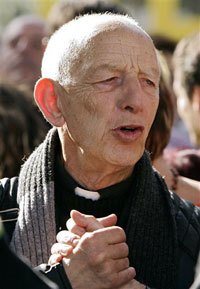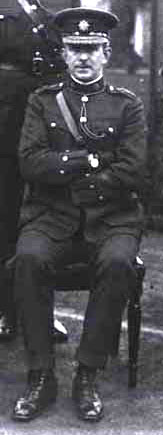|
In
a sense, the transition from the ancien
régime to the
nation-building of the nineteenth century was a period of
cultural introspection in both Ireland
and on the Iberian Peninsula, and signified the end of some types of mobility and
migration of the ancien
régime. All Irish
colleges in Spain, except in Salamanca, were closed down in the wake of the expulsion of the Jesuits
in 1767.
Catholic
emancipation in Ireland
(1829) favoured the return of Irish Catholic institutions to Ireland
from the continent in the nineteenth and twentieth centuries,
but at the cost of diminishing hundred-years-old cultural
connections. It also paved the way for the birth of
nationalism. During the nineteenth century, Spanish culture
and history served in Ireland as a mirror in which to reflect the themes and problems that
preoccupied the Irish writers of the time, as seen in Asier
Altuna’s article in this journal. However, the great Irish
migration of the nineteenth century was not directed towards Spain
and Portugal, countries struggling with political turmoil and the need for
economic modernisation, but did follow former Iberian links to
Latin America.
Irish
people were also involved in the most dramatic event of
Spanish history of the twentieth century, namely, the Civil
War (1936-39). Again, Spain served as a mirror in which the fears and hopes of Irish
society were reflected. Most of the population, headed by the
Catholic Church and its conservative political allies,
strongly supported the military rebels. However, the Irish
Free State advocated a policy of non-intervention in the
League of Nations but did nothing to prevent the departure of
volunteers to Spain.
General
Eoin O’Duffy (1892-1944), former head of the Blueshirt
movement in Ireland, brought a group of volunteers to fight for Franco. These
were welcomed and integrated into the Spanish Legion (the
elite troops of the Spanish army) in which they formed their
own regiment, the Bandera
XIV (Fourteenth Flag). Their poor military performance,
combined with the high cost involved, convinced Franco’s
camp to reship them back to Ireland as soon as possible.
Support
for the Spanish Republic
was an unpopular subject in 1930s Ireland. It was not uncommon for meetings in favour of the Republican
government to bear the brunt of aggression. However, the Irish
Republican Army leader Frank Ryan (1902-1944) brought members
of the Republican Congress Party to Spain
to fight for the Spanish Republic. They formed the James Connolly Column in the International
Brigades. In contrast with the experience of their fellow
countrymen on the opposite side, they participated in the
major battles of the war, suffering heavy losses, up to the
retreat of the foreign volunteers.
The
second half of the twentieth century was characterised, both
in Ireland
and on the Iberian Peninsula, by progressive European integration. Although the two
regions joined the European club at an interval of thirteen
years (Ireland in 1973 and Spain and Portugal in 1986), they
seem to have followed quite a similar path. On joining, all
three countries were members of the so-called ‘poverty
crescent’ of the community, comprising Greece, Southern Italy,
Spain, Portugal
and Ireland.
In
recent decades, Ireland
and Spain have followed quite similar paths inside the European Union
(EU), of sustained economic growth. It is a clear sign of
prosperity that both countries have rapidly made the
transition from being countries of a profound tradition of
emigration to having the highest immigration rates in the EU.
In this journal, Oscar Molina studies the contributory factors
that have led Ireland
and Spain to their present situations, and Claire Healy
analyses the similar immigration experiences of Ireland and
Portugal.
Another
issue, and a most sensitive one, which has linked Ireland
and the Iberian Peninsula from the last quarter of the
twentieth century onwards, has been the nationalist conflicts
in Northern Ireland and the Basque Country. The Irish Catholic priest Alec Reid,
who played a prominent role as facilitator in the negotiations
leading to the Good Friday Agreement of 1998, has attempted to
bring his experience to bear in the Basque conflict. In
recognition of his labours, he received the ‘World Mirror’
prize in 2002, awarded by the Sabino Arana Foundation. In a
society in which political conflict invades every aspect of
life, even a sportsman such as John Aldridge, as studied here
by Matthew Brown, had to be extremely careful in his role as
goal-scorer to avoid getting embroiled in nationalist
politics.
|

Irish priest Alec Reid attends a rally
in Bilbao, 1 April 2006.
(Alvaro Barrientos/AP) |
Academic
collaboration between Ireland
and Spain, especially in the field of early modern history, has greatly
increased in the last decade. Formerly, Irish scholars such as
Micheline Kerney Walsh had gone to Spain in order to research sources relating to Irish people in
Spanish archives. They were often amazed with the results,
particularly compared with the scarcity of sources from the
same period remaining in Ireland. This led Irish scholars to believe that, in order to
understand the early modern experience in Ireland, sources had to be sought and analysed on the European
continent. This idea was the origin of the Irish
in Europe project, coordinated by Thomas O’Connor and
Mary Ann Lyons in Maynooth, [1]
and the Irish on the Continent database, directed by Ciarán
Brady and Declan Downey.
The
commemoration of the Battle of Kinsale (1602-2002) was the
inspiration for many scholarly events in both Spain and
Ireland, which have continued and gained momentum with the
formation of a research group in Spain ‘La comunidad
irlandesa en la Monarquía Hispánica (siglos XVI-XVIII):
identidad e integración social’ (‘The Irish community in
the Hispanic Monarchy (sixteenth to eighteenth centuries):
identity and social integration’, HUM2005-05763/Hist). [2]
This scholarly effort has been generously supported by both
Spanish and Irish public authorities.
Research
on the Irish in Portugal has followed a more discreet path, not quite befitting of the
high quality of early modern studies in the country and the
energy of its research community. In the 1960s, a thesis was
presented at University College Dublin on the Dominican
diplomat Daniel O’Daly by Margaret Curtin, which has not
been published. An article by Benvenuta Mac Curtain was
however published in Irish
Historical Studies. In
1981 Manuel Gonçalves da Costa published a Portuguese sources
collection for Irish history (Gonçalves da Costa, 1981). From
then on, and excepting Patricia O’Connell who wrote a
monograph on the Irish college in Lisbon ten years ago, no
major research on Ireland and Portugal has been carried out,
at least as far as this editor is aware (O’Connell, 1997).
However, signs at present are positive and hopefully this
situation is due to improve in the next few years: exciting
times ahead in Portugal
and Ireland.
Igor
Pérez Tostado
Universidad Pablo de Olavide, Seville
Notes
[1]
The Irish in Europe Project, Department of Modern
History, National University of Ireland, Maynooth, County
Kildare, Ireland. Website (http://www.irishineurope.com/),
cited 6 September 2007.
[2]
La Comunidad Irlandesa en la Monarquía Hispánica (siglos
XVI-XVIII): Identidad e Integración Social, Instituto de
Historia, CSIC. Duque de Medinaceli, 6. 28014 Madrid. Website
(http://www.irishinspain.org/), cited 6 September 2007.
References
-
Downey, Declan M. Culture and
diplomacy. The Spanish-Habsburg Dimension in the Irish Counter
Reformation Movement, c. 1529-1629 (Cambridge, Cambridge
University Press, 1994, BL Microfilm).
-
Gomez-Centurión Jimenez, Carlos. Felipe
II, la empresa de Inglaterra y el comercio Septentrional
(1566-1609) (Madrid: Editorial Naval, 1988).
-
Gonçalves da Costa, Manuel. Fontes
Inéditas Portuguesas para a História de Irlanda (Braga, 1981).
-
Mac Curtain, Benvenuta. ‘An Irish agent of the
counter-reformation, Dominic O'Daly’ in Irish
Historical Studies (Dublin), 15:60 (1966), pp. 391-406.
-
Ó Connell, Patricia. The
Irish College
at Lisbon,
1590-1834 (Dublin, Four Courts, 1997). |



